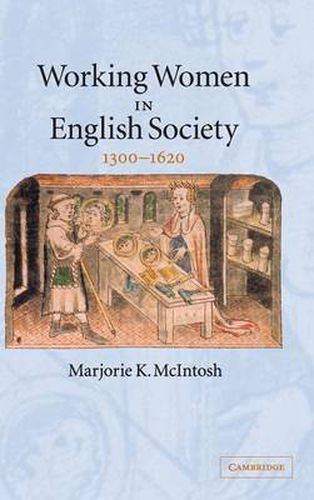Readings Newsletter
Become a Readings Member to make your shopping experience even easier.
Sign in or sign up for free!
You’re not far away from qualifying for FREE standard shipping within Australia
You’ve qualified for FREE standard shipping within Australia
The cart is loading…






This study explores the diverse and changing ways in which English women participated in the market economy between 1300 and 1620. Marjorie McIntosh assesses women’s activity by examining their engagement in the production and sale of goods, service work, credit relationships, and leasing of property. Using substantial new evidence from equity court petitions and microhistorical studies of five market centres, she challenges both traditional views of a ‘golden age’ for women’s work and more recent critiques. She argues that the level of women’s participation in the market economy fluctuated considerably during this period under the pressure of demographic, economic, social, and cultural change. Although women always faced gender-based handicaps, some of them enjoyed wider opportunities during the generations following the plague of 1348-9. By the late sixteenth century, however, these opportunities had largely disappeared and their work was concentrated at the bottom of the economic system.
$9.00 standard shipping within Australia
FREE standard shipping within Australia for orders over $100.00
Express & International shipping calculated at checkout
This study explores the diverse and changing ways in which English women participated in the market economy between 1300 and 1620. Marjorie McIntosh assesses women’s activity by examining their engagement in the production and sale of goods, service work, credit relationships, and leasing of property. Using substantial new evidence from equity court petitions and microhistorical studies of five market centres, she challenges both traditional views of a ‘golden age’ for women’s work and more recent critiques. She argues that the level of women’s participation in the market economy fluctuated considerably during this period under the pressure of demographic, economic, social, and cultural change. Although women always faced gender-based handicaps, some of them enjoyed wider opportunities during the generations following the plague of 1348-9. By the late sixteenth century, however, these opportunities had largely disappeared and their work was concentrated at the bottom of the economic system.